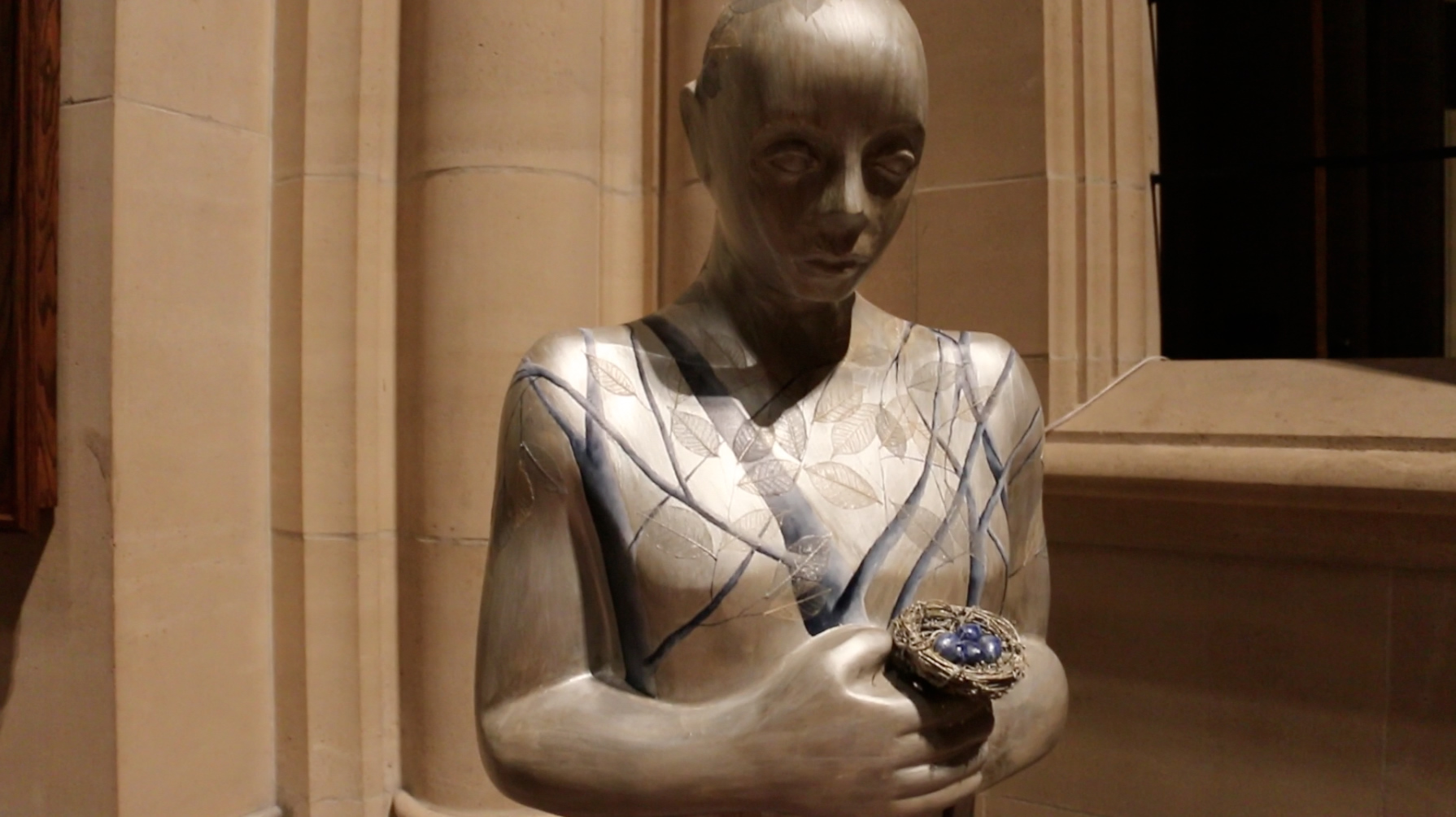TGN: Hi Lynn. Thanks for speaking with us. It’s always nice seeing one of the artists with their work in an exhibit like this. Your work really stood out for me, as it was a interesting interpretation of the subject of this show: Prayer. Could you tell us how you get involved with CARAVAN’s project and how you solved the artistic problem you were given?
LG: In 2013, I participated in a show to commemorate the Holocaust. The curator of that show passed my name to Paul Gordon Chandler, the founder and one of the curators for the CARAVAN exhibition. Paul Gordon was looking for artists with Jewish backgrounds to participate. Once I was selected, I was excited to get started on the art.
I enjoyed working out the artistic problems posed by this project. I had never painted on fiberglass before, so I had to do quite a bit of research with regard to materials to use, etc. While doing that research, I began thinking of the direction that I wanted to take with the piece. The subject of the show was Prayer, which is a difficult subject to depict in a way that isn’t literal. I am not a particularly observant Jew. I do align myself with Judaism, and that identification has always been important to me. As long as I can remember, I have also been more drawn to the common bonds that we all share rather than the aspects of our backgrounds that shine a spotlight on our differences. Prayer generally provides a measure of peace to those who practice it. I find my peace in nature. In fact, I would argue that my walks in the woods, among the trees, provide me with the peace that most find while practicing prayer. Therefore, it wasn’t a stretch for me to look to nature as my solution to the artistic challenge presented in this show. Trees figure prominently in many religions, so in searching for the common ground, I need look no further than the tree. From a Jewish perspective, the tree is symbolic of the Torah. Therefore I felt strongly that the tree symbolism would work in that regard as well. The prayer form that I received provided the perfect “canvas” on which to work. The stance of my sculptural form allowed me to show the figure embracing the trees and the trees embracing the form, which implies an interconnectedness between individuals, groups of people, and nature.
TGN: How does it feel to be involved with such an ambitious, massive project, one that is not necessarily part of the “World of Art” but rather more of a Public experience? Where has your work been as a part of this traveling exhibit?
LG: I was thrilled to participate in this show. It was everything that I have wanted to experience with my art. I am certainly behind the idea of building bridges between cultures, and pleased that I could express that in my work. My work touched a wide variety of people, which is something many artists enjoy. Also, through this exhibition, I have met artists from different backgrounds and cultures, which is exciting because ultimately most artists speak the same mother tongue in art.
I have a studio that is open to the public. So, the piece was in my studio while I was working on it. It was great fun to share the progress with people who found their way into my studio. The show opened in the United States at the National Cathedral in Washington, DC, and then moved to the Cathedral of Saint John the Divine in New York City.
TGN: We spoke with the founder of CARAVAN (The Rev. Paul-Gordon Chandler) and learned a lot about his ambitious efforts to “build bridges” between the cultures of the Middle East and the West through the Arts. Do you have any thoughts about this exhibit from a religious or spiritual perspective, or perhaps a political perspective that you wish to express through your work?
LG: I was moved that artists from varied backgrounds could get together with goodwill for a common purpose. The prevailing concept behind my work for this show was that we are stewards of the land and of one another. In fact, the title of the piece is “The Steward.” We are all connected, and can provide comfort in times of trouble, and joy in positive moments. Our roots may help to define us, and lead us to a better understanding of others if we so choose.




